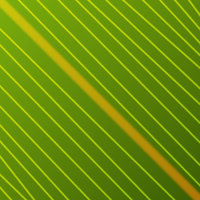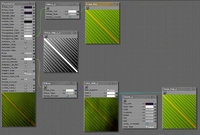That's strange - how come we get such different results in Poser 11? If you have Dawn, you could simplify the tests by loading her CR2, because she doesn't have any morphs by default, not even JCMs. She loads 100% blank, which is awesome for content creators. Mine loads with textures, so I have reset her materials to remove all texture maps, and then move the camera around to settle memory usage. Over here it settles at around 323MB in a blank scene with only bare Dawn loaded with no textures.
After this, all I did was to use Object --> Duplicate a few times until I end up with 4 copies on stage, keeping an eye on Task Manager to see the memory load changes. In my tests, every duplication adds only around 30MB, instead of 217MB. That's 13~21 times less memory (in average) than when I loaded the figure.
I have ran the test again in Poser 11.3, doing like described above using DawnSE.cr2. Here are the new results:
429MB <- Loaded the DawnSE.cr2 and deleted all textures +429MB
449MB <- Object -> Dusplicate +20MB <<-- Instancing!!
481MB <- Object -> Dusplicate +32MB <<-- Instancing!!
518MB <- Object -> Dusplicate +37MB <<-- Instancing!!
These are more or less in the same ballpark as before. It took 21X less memory usage to duplicate DawnSE compared to the first time she was loaded. I have also extended the test by loading a new DawnSE.cr2 from the library, complete with textures (no morphs) to see if it makes a difference. Here is the result.
594MB <- Loaded a new DawnSE.cr2, unchanged with textures (no morphs). +76MB <<-- Instancing!!
568MB <- Deleted all textures from it -26MB, which means +50MB for this new copy with no textures. That's 8X less memory than loading Dawn the first time.
The impact on memory load seems a little more visible when we load a CR2 instead of duplicating existing geometry already on scene. It took 50MB instead of 20-30MB from duplication. And yet, that still seems FAR from how much memory it took to load it the first time (8+ times less).
For the record, I am only observing the Poser.exe task, ignoring the multiple CEF tasks because they are only used to communicate with the HTML5 library. From this new test, duplicating the figure seems to save me about 30MB comparing to loading from the library. It seems like instancing in Poser is more optimized for duplication than from loading from the library. This is new info comparing to my last test.
BTW, I am using Windows 10 Pro x64 auto-updated to the latest version. My results confirm that Poser indeed supports instancing. In my scene, I even made the ground invisible to reduce clutter, and I have a small cube at the center that I use as a light target. There is nothing else on scene, and all 3 lights are spotlights (no large HDRI maps loaded).
I can't say why you got different results, but I was able to replicate the experiment and the results look consistent. Duplicating the first Dawn used 21 times less memory, and that's what instancing is all about.



